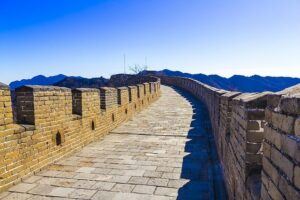Introduction
Patent leather is a type of leather that has a glossy, shiny finish. It is commonly used in the production of shoes, handbags, and other fashion accessories. The process of making patent leather involves several steps that transform regular leather into a sleek and polished material. In this article, we will explore how patent leather is made, from the selection of materials to the final finishing touches.
Selection of Materials
Leather: The first step in making patent leather is selecting high-quality leather. Typically, full-grain or corrected-grain leather is used due to its durability and smooth surface. Full-grain leather is the top layer of the hide, while corrected-grain leather is sanded and buffed to remove imperfections.
Chemicals: To achieve the glossy finish, specific chemicals are required. The most common chemical used is polyurethane, which provides a protective coating and enhances the shine. Other chemicals, such as lacquer or varnish, may also be used in the process.
Preparation of Leather
Cleaning and Drying: Before applying any chemicals, the leather needs to be thoroughly cleaned and dried. This ensures that the surface is free from dirt, dust, and moisture, which can affect the adhesion of the coating.
Application of Chemicals: Once the leather is clean and dry, the selected chemicals are applied to the surface. The polyurethane or other coating is carefully spread over the leather using a brush or spray. Multiple layers may be applied to achieve the desired level of shine.
Finishing Process
Buffing: After the coating has been applied, the leather is buffed to remove any imperfections or unevenness. This process helps to create a smooth and uniform surface, enhancing the glossy appearance.
Drying and Curing: The leather is then left to dry and cure. This allows the chemicals to bond with the leather and form a durable and long-lasting finish. The drying time can vary depending on the type of chemicals used and environmental conditions.
Additional Treatments
Coloring: In some cases, the patent leather may undergo a coloring process to achieve a specific shade or hue. This can be done before or after the application of the coating, depending on the desired outcome.
Embossing: To add texture or patterns to the patent leather, it may be embossed using specialized machinery. This process involves pressing the leather with heated plates or rollers to create the desired design.
Conclusion
In conclusion, patent leather is made through a multi-step process that involves the selection of high-quality leather, the application of specialized chemicals, and various finishing treatments. The result is a glossy and shiny material that is widely used in the fashion industry. Understanding the process behind patent leather production helps to appreciate the craftsmanship and skill involved in creating this unique material.
References
1. leather-dictionary.com
2. britannica.com
3. thesprucecrafts.com






